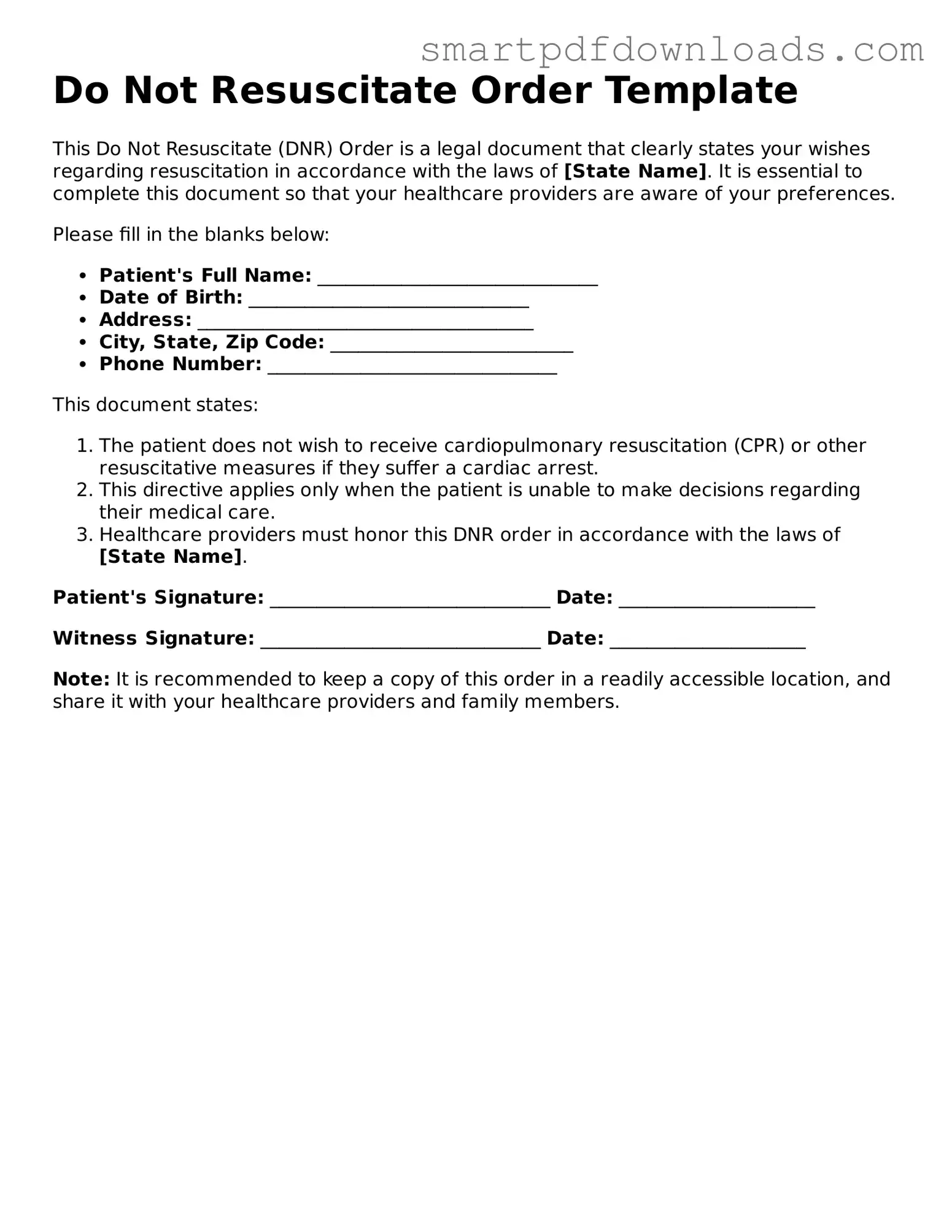Do Not Resuscitate Order Template
This Do Not Resuscitate (DNR) Order is a legal document that clearly states your wishes regarding resuscitation in accordance with the laws of [State Name]. It is essential to complete this document so that your healthcare providers are aware of your preferences.
Please fill in the blanks below:
- Patient's Full Name: ______________________________
- Date of Birth: ______________________________
- Address: ____________________________________
- City, State, Zip Code: __________________________
- Phone Number: _______________________________
This document states:
- The patient does not wish to receive cardiopulmonary resuscitation (CPR) or other resuscitative measures if they suffer a cardiac arrest.
- This directive applies only when the patient is unable to make decisions regarding their medical care.
- Healthcare providers must honor this DNR order in accordance with the laws of [State Name].
Patient's Signature: ______________________________ Date: _____________________
Witness Signature: ______________________________ Date: _____________________
Note: It is recommended to keep a copy of this order in a readily accessible location, and share it with your healthcare providers and family members.
